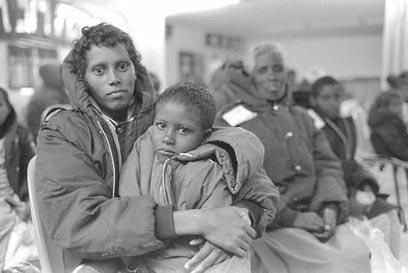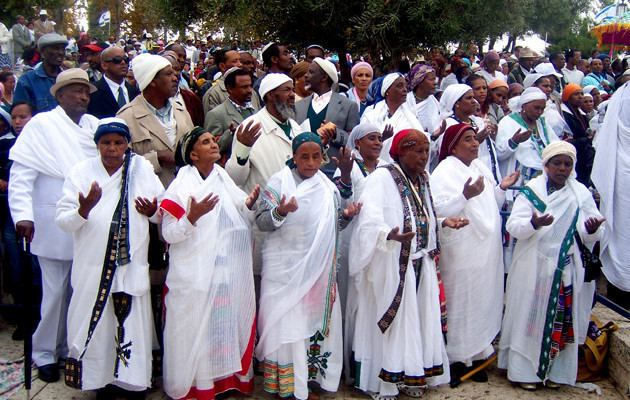 | ||
Operation moses
Operation Moses (Hebrew: מִבְצָע מֹשֶׁה, Mivtza Moshe) refers to the covert evacuation of Ethiopian Jews (known as the "Beta Israel" community or "Falashas") from Sudan during a famine in 1984. Originally called Gur Aryeh Yehuda (“Cub of the Lion of Judah”) by Israelis, the United Jewish Appeal changed the name to “Operation Moses.”
Contents
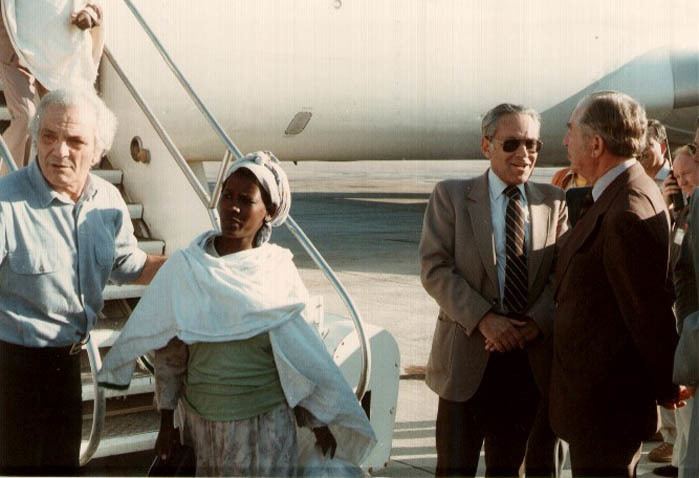
Operation moses 30 years after exhibition at beit hatfutsot 2016
History

The operation, named after the biblical figure Moses, was a cooperative effort between the Israel Defense Forces, the Central Intelligence Agency, the United States embassy in Khartoum, mercenaries, and Sudanese state security forces. Years after the operation completed, it was revealed that Sudanese Muslims and secret police of Sudan also played a role in facilitating the mass migration of Ethiopian Jews out of Sudan. Operation Moses was the brainchild of then Associate U.S. Coordinator for Refugee Affairs, Richard Krieger. After receiving accounts of the persecution of Ethiopian Jews in the refugee camps, Krieger came up with the idea of an airlift and met with Mossad and Sudanese representatives to facilitate the Operation.
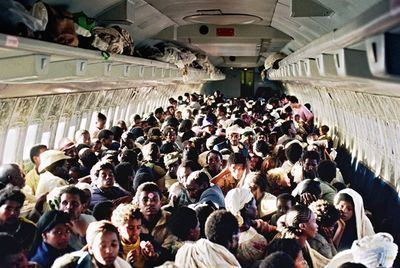
After a secret Israeli cabinet meeting in November 1984, the decision was made to go forward with Operation Moses. Beginning November 21, 1984, it involved the air transport by TEA of some 8,000 Ethiopian Jews from Sudan via Brussels to Israel, ending January 5, 1985.
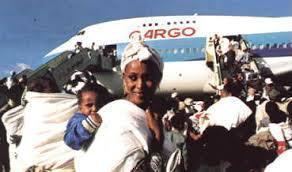
Over those seven weeks, over 30 flights brought about 200 Ethiopian Jews at a time to Israel. Trans European Airways had flown out of Sudan previously with Muslims making the pilgrimage to Mecca, so using TEA was a logical solution for this semi-covert operation because it would not provoke questions from the airport authorities. Before this operation, there were approximately as few as 250 Ethiopian immigrants in Israel. Thousands of Beta Israel had fled Ethiopia on foot for refugee camps in Sudan, a journey which usually took anywhere from two weeks to a month. It is estimated as many as 4,000 died during the trek, due to violence and illness along the way. Sudan secretly allowed Israel to evacuate the refugees. Two days after the airlifts began, Jewish journalists wrote about “the mass rescue of thousands of Ethiopian Jews.”
Operation Moses ended on Friday, January 5, 1985, after Israeli Prime Minister Shimon Peres held a press conference confirming the airlift while asking people not to talk about it. Sudan killed the airlift moments after Peres stopped speaking, ending it prematurely as the news began to reach their Arab allies. Once the story broke in the media, Arab countries pressured Sudan to stop the airlift. Although thousands made it successfully to Israel, many children died in the camps or during the flight to Israel, and it was reported that their parents brought their bodies down from the aircraft with them. Some 1,000 Ethiopian Jews were left behind, approximately 500 of whom were evacuated later in the U.S.-led Operation Joshua. More than 1,000 so-called "orphans of circumstance" existed in Israel, children separated from their families still in Africa, until five years later Operation Solomon took 14,000 more Jews to Israel in 1991. Operation Solomon in 1991 cost Israel $26 million to pay off the dictator-led government, while Operation Moses had been the least expensive of all rescue operations undertaken by Israel to aid Jews in other countries.
